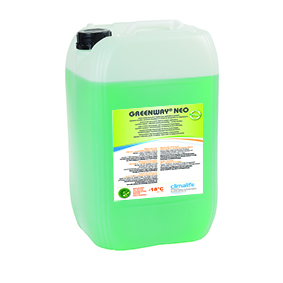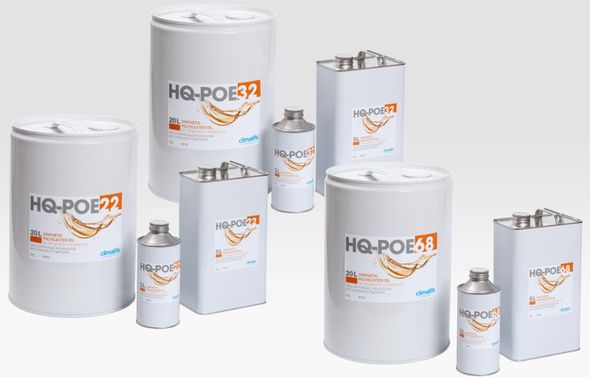Quota Free Refrigerants
We have seen over the past couple of years the increasing pressures quota restrictions are placing on the supply of HFC’s. This has been affecting the price and availability of products that have traditionally been fairly easy to get hold of.
Most of us will also know about the lower GWP A2L refrigerants such as R-32 and the new HFO and HFO blends coming to market. These are definitely the way forward for many new systems but it’s also good to consider other ‘quota free’ refrigerants such as Ammonia, CO2, Heat Transfer Fluids and Hydrocarbons.
Along with R-1234yf, R-1234ze, and R-1233zd, they can offer single digit or zero value GWP solutions, good energy efficiency and reduced environmental impact.
“ It is important to consider all the options available in order to make the right choice for the system being designed, also taking into account location, application, system size and safety. ”
Secondary Heat Transfer Fluids
In te rms of new equipment, the use of water chillers that utilise heat transfer fluids (or Glycol) can mean a much smaller charge of refrigerant is required. This option is often restricted to a plant room or a roof top which offers a wider range of refrigerants, including flammables, to select from.
rms of new equipment, the use of water chillers that utilise heat transfer fluids (or Glycol) can mean a much smaller charge of refrigerant is required. This option is often restricted to a plant room or a roof top which offers a wider range of refrigerants, including flammables, to select from.
There are many advantages to this type of system, as it can provide a much more even temperature across the whole of the coil and in the event of a leak, can be much cheaper to replace than HFC refrigerants.
There are now also viable alternatives to traditional glycols; products produced from renewable resources and that have some technical advantages over traditional glycols and salt solutions. They also have excellent viscosity even at low temperatures. Note, as with all glycols, they need to be handled correctly and should contain an appropriate inhibitor package to avoid corrosion.
Leak Detection
“ It’s important to remember that one of the biggest F-Gas objectives was really about reducing and preventing leaks. This continues to be an essential part of the process and there are some good tools available to help identify leaks before they become a costly problem. ”
On systems with a charge of 500 CO2 equivalent tonnes or more, static leak detection is a legal requirement under F-Gas. With the rising costs of refrigerant and many systems holding thousands of pounds of refrigerant, it is easy to see why an early warning leak detection system is such a good idea as it can detect a leak much more quickly enabling early rectification of the problem and ultimately save money. It is claimed that a simple leak detection system can save over half of potentially lost refrigerant from a system.
There are leak detection products that can suit most types of installation and budgets. Starting with products that cost a few hundred pounds via semi-conductor systems, through to products that have infra-red systems. There are even products that monitor the system itself.
Climalife can help and advise on which device is suitable for a particular system.
Good Maintenance
An effective maintenance program ensures that systems continually operate at their optimum level. In recent years there has been a decline in end users seeing the value of routine maintenance in favour of a more reactive type approach. For these users, this could prove to be more costly in the long run than paying for regular maintenance.
 A clean, well maintained system can help to maintain performance, energy efficiency, can prevent contamination, remove offensive odours and increase longevity.
A clean, well maintained system can help to maintain performance, energy efficiency, can prevent contamination, remove offensive odours and increase longevity.
 Regular oil changes should also form part of a good maintenance program, to ensure all the moving parts of a compressor are lubricated to their optimum level – regular maintenance can help to keep breakdowns and potential leaks to a minimum.
Regular oil changes should also form part of a good maintenance program, to ensure all the moving parts of a compressor are lubricated to their optimum level – regular maintenance can help to keep breakdowns and potential leaks to a minimum.
All the Tools
In summary, as an industry, we can help to control refrigerant usage with careful thought and planning on new equipment and employ some good practises relating to effective cleaning maintenance and leak detection.
There are many products available to help the industry and suggest to always widen the scope of product selection to encompass all the tools available for the job.


